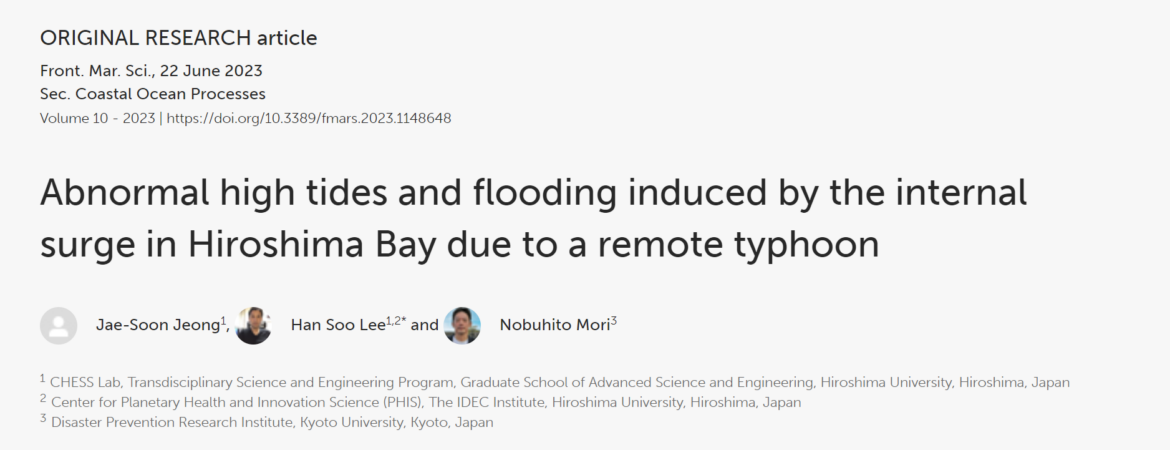Jeong J-S, Lee HS*, and Mori N., 2023. Abnormal high tides and flooding induced by the internal surge in Hiroshima Bay due to a remote typhoon. Front. Mar. Sci. 10:1148648. Open access
[Abstract] The Itsukushima Shrine is located in northern Hiroshima Bay in the Seto Inland Sea (SIS). This structure of great cultural value is preserved as one of the World Heritage Sites in Japan. The shrine was built seaside, 30 cm above the highest tide, to prevent it from submerging. However, from 2011 to 2019, the shrine was submerged four times during September due to internal surges. To study the abnormal tide event on 29 September 2011, a high-resolution numerical ocean circulation model was established using Semi-implicit Cross-scale Hydroscience Integrated System Model (SCHISM). Observed subtidal components of surface elevation in the northern part of the bay decreased due to northerly winds when the typhoon passed east off the bay. After 7–8 days of typhoon passage, the component increased abnormally in the northern part of the bay. Simulation results revealed that a destabilized density stratification by the typhoon winds most likely caused bay-scale internal waves. The internal wave developed after the typhoon passed and was caught from the kinetic energy filtered in the possible internal wave periods. The internal wave propagated southward after the typhoon passage and returned to the northern bay, causing the subtidal component to increase after 7–8 days. Sensitivity tests with various scales of the typhoon were performed, and the test results exhibited a positive relationship between the abnormal tide level and typhoon intensity to some extent. The results can be generally applied to a semi-closed bay or closed water body for internal wave generation and propagation under specific meteorological conditions for coastal protection and disaster prevention.


